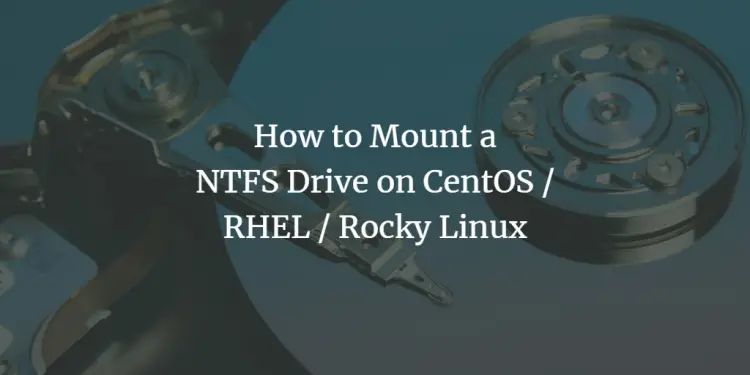How to Mount an NTFS Drive on CentOS / RHEL / Rocky Linux
On this page
This tutorial will show you how to mount an NTFS drive ina read/write mode on CentOS and other RHEL based Linux operating systems with ntfs-3g driver. NTFS-3G is a stable Open Source NTFS driver that supports reading and writing to NTFS drives on Linux and other operating systems.
The ntfs-3g driver is available in the EPEL repository, it is available for all RHEL-based systems like AlmaLinux, CentOS, Rocky Linux, and also RHEL itself from version 6 to 9. The first step is to install and activate EPEL on your Linux system.
Enable the EPEL repository
Run the following command as root user on the shell to enable the EPEL repository.
yum install epel-release
EPEL (Extra Packages for Enterprise Linux) is a Fedora Special Interest Group that creates, maintains, and manages a set of additional high quality packages for Enterprise Linux, including, but not limited to, Red Hat Enterprise Linux (RHEL), CentOS and Scientific Linux (SL), Oracle Linux (OL).
Install ntfs-3g driver
Then we have to install the ntfs-3g package with yum.
yum install ntfs-3g
Once installed, we create a directory where the NTFS drive shall be mounted:
mkdir /mnt/win
Now we can mount the NTFS partition by running this command:
mount -t ntfs-3g /dev/sdb1 /mnt/win
In this example, my NTFS partition is the device /dev/sdb1. You have to replace that with the device name of your NTFS partition.
The mount point will exist until reboot or until you unmount it with:
umount /mnt/win
To mount the NTFS partition permanently, add the following line to the /etc/fstab file.
Open /etc/fstab with an editor:
nano /etc/fstab
And add the line:
/dev/sdb1 /mnt/win ntfs-3g defaults 0 0
Again, replace /dev/sdb1 with the device name that matches your setup. Now your Linux system will mount the NTFS drive automatically at boot time.


